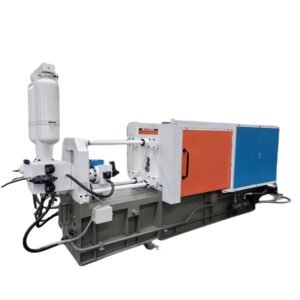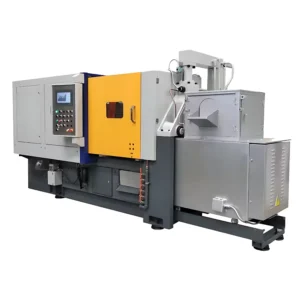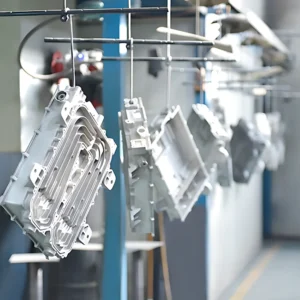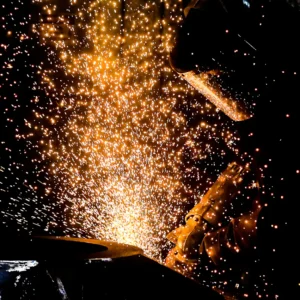Over the past few years, CNC machining has rapidly taken over the industrial sector due to its high precision and repeatability. Today, there is a wide range of CNC machines. CNC lathe is one of them.
It can seem simple when you understand the steps involved in operating a CNC turning. This is not true, it just seems simple but it is very complicated to do CNC turning properly. So, let’s say you want to know what the machining process looks like and how to maximize it. This guide will give you all the information you need about CNC turning.
What is CNC Turning?
CNC turning is a very accurate and quick way to remove material from a project, a lot like a lathe. Pressing a cutting tool against a moving workpiece to remove material and shape it in the way you want is what it means.
The raw material spins quickly while the center of spinning, which is also called the lathe, stays still. The piece of work is moved in two directions by a dual CNC lathe, and a single-point cutting tool helps shape the metal. A computer program helps the machine or turning center work, which makes sure that very accurate parts are made.
Milling and CNC turning are often mixed up, but they are not the same thing. In most subtractive processes, like CNC milling, the piece of work is fixed to the bed while a tool moves across it to cut it. On the other hand, CNC turning works in reverse. It is the item turning while the cutting edge stays still.
What is CNC Turning Used For?
CNC turning is a precision machining process used primarily for creating cylindrical parts. This method involves rotating a workpiece while a cutting tool moves in a linear path, efficiently shaping materials into round, tubular, or conical forms. Common applications include manufacturing components like shafts, rods, pulleys, and bushings, which require high precision and smooth finishes.
Additionally, advanced CNC turning centers may feature live tooling capabilities, allowing for the creation of non-cylindrical shapes such as polygons. This versatility enables the production of complex parts, including those with square, hexagonal, or custom profiles, in a single setup, enhancing production efficiency and accuracy. This process is particularly valuable in industries such as aerospace, automotive, and manufacturing, where dimensional precision and high-quality surface finishes are crucial.
What Are the Benefits of CNC Turning?
Many good things come from CNC turning, such as the ones below:
Accuracy
CNC lathes use CAD or CAM files to make sure that numbers are exact, so mistakes don’t happen. Professionals can use CNC machines to make things very accurately, whether they’re making a prototype or a whole production cycle. Because that’s how the machine was made, every cut is exact. This means that the last cut part is the same as the first one.
Flexibility
Because they come in different sizes, turning centers can be used for many different jobs. It’s easy to make changes to this machine because the work is already set up. Before the operator can finish machining the part or make other parts, all they have to do is make the necessary changes to the code in the CAM software. So, you can count on the same precision CNC cutting services company if you need a lot of different parts.
Safety
Companies that make things have to follow strict safety laws and rules to make sure everyone is safe. With an automatic lathe, the operator only needs to watch over the machine, so there is less work to do. In the same way, the lathe’s body has fully or partially sealed safety features that keep particles from splashing off of the things being worked on and keep the staff from getting hurt.
Faster Speeds
On CNC lathes and turning centers, mistakes are less likely to happen when work is done by following a program. With this kind of machine, work can be done faster without lowering the quality of the end product. Last but not least, you can get the parts you need faster than with other choices.
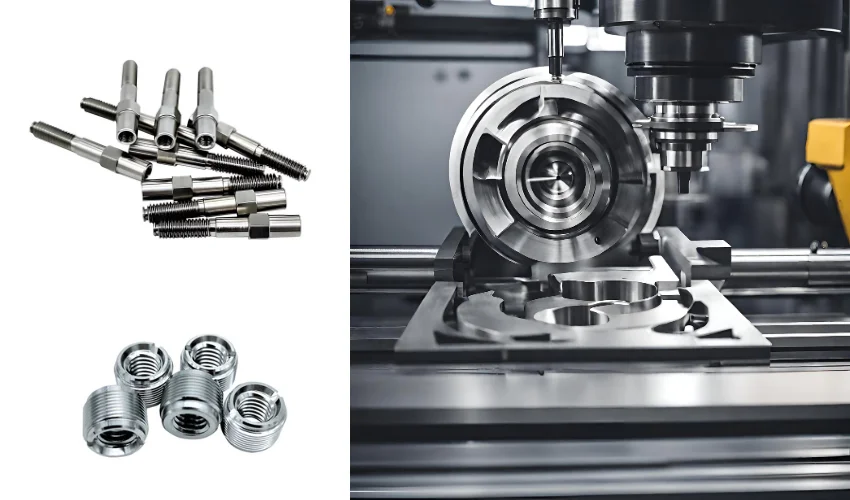
How Does CNC Turning Work?
It can be hard to figure out how CNC turning works. We’re going to simplify the process and walk you through it all step by step, from planning to creation.
These are the key steps in CNC turning:
Step 1: Converting CAD Files to CNC Programs
The CAD file needs to be changed into CNC machine code as the first step. There is no need for complicated code to do this. You should already have some flat drawings of your plan. After that, you’ll need to use software like AutoCAD or SolidWorks to keep electronic records of these models.
It is possible to change computer drawings from CAD files to CAM files for processing. Using the software tools we already talked about, you can also send models in CAM format. After that, these tools can be used by the manufacturing engineer to see if the part can be made.
Step 2: Get the CNC Machine Ready
- The next step is to set up the machine. Even though machines do most of the work, there still needs to be an operator. These things should be done to get the CNC lathe ready:
- Make sure there is no power going on. It’s not always safe to use a CNC machine. Because of this, extra care is needed, and the power switch needs to be checked before it can be used.
- Secure the piece of work to the block. The chuck makes sure that the part stays in place while the machine turns. If it’s not put right, it could be dangerous, and the part might not be the right size.
- Load the tool turret. When you turn, you need to pick the right tool for the finish you want. With a turret, you can hold as many tools as possible at once while you work.
- Make sure the setting is right. Put the tool and the piece of work together properly to do the job right.
- Upload the CNC program. The last thing you need to do before the job starts is put the CNC code into the machine.
There are two things you need to remember right now. The turning speed tells you how fast the thing is turning. Second is the feed, which is how fast the cutting tool goes along the rotating piece of metal.
A professional in production needs to figure out these numbers because wrong guesses can change the end result. Also, wrong predictions for some materials can lead to damage or surfaces that aren’t level and can’t be fixed.
Step 3: Make the part that was CNC-turned
Making the part you want is the last step. Depending on what you want to do, you can pick from different turning processes. The number of turns also depends on the complexity of the part.
The effect produced by the manufacturing method depends on the raw material used. Plastic parts don’t work the same way as metal parts, which have a rougher surface.
Related Reading:
CNC router: definition and how it works
Different Kinds of CNC Turning
There are different kinds of lathe tools used in CNC turning. Because of this, you can do many things on a single piece of work. They come in two different types: internal and external. Operations on the outside of the workpiece can change its outer width. On the other hand, internal actions can change the width of the object.
Each operation is unique because the cutting tool and the path to remove the material are different. Let us check out how they do their job.
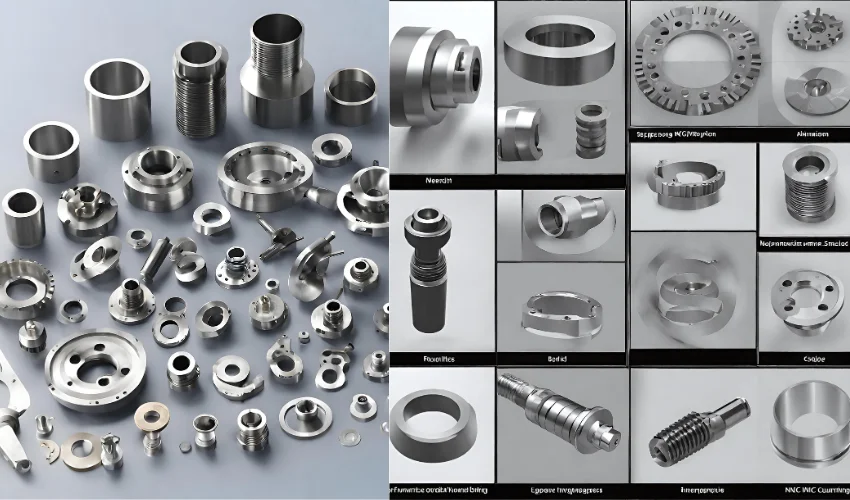
Turning Specific Operations (External)
Turning
At this step, a single-point turning tool goes along the side of the piece of work to cut away material and make different shapes. Tapers, chamfers, steps, and curves are just some of the shapes that it can make. Usually, these parts are made with a small radial depth of cut, and the width is reached by machine-cutting them several times.
Taper turning can make a surface that looks like a taper by gradually making the width of a cylinder object narrower or wider.
Hard Turning
This method can be used to turn materials with a Rockwell C hardness of more than 45. Before you start this process, you should heat treat the piece of work. The goal of hard turning is to cut down on or get rid of the need for grinding. It works just as well as rough grinding to get rid of holes. But hard turning might not work as well for jobs where size and shape are very important.
Facing
A single-point turning tool is pushed outward along the end of the workpiece in this step. Small amounts of material are taken off this way, leaving a flat, smooth surface. Surface depths are usually very small, and they can be reached in a single pass.
Grooving
For this step, the single-point turning tool also goes outward to the side of the piece being worked on. It makes a slot that is the same width as the cutting tool this way. You can also cut the line more than once to make it wider than the tool. Some companies also use special tools to make grooves of different sizes.
Separation
The cutting tool makes a groove-like cut into the side of the piece of work. A single-point tool cuts to the piece’s center or inner edge. In this way, it cuts a piece of raw material.
Non-specific Operations (Internal)
Boring tools
Boring tools go inside the piece being made and cut along the inside surface to make shapes like chamfers, steps, curves, and tapers. You can set the tool to the cutting width you want because the boring head is movable.
Drilling
Drilling takes away material from the inside of the workpiece using a normal drill bit. These tools are held in place by the base or tailstock of the turning center.
Threading
A single-point drilling tool with a 60-degree angle at the tip is used for this task. This machine goes along the side of the piece of work and cuts threads on the outside of the piece. The machinist can cut threads to a certain length, but some threads may need more than one cut.
Knurling
In this step, a special knurling tool is used to make a pattern of serrations on the surface of the piece of work. This shape can be used to make something look better or as a handle.
Reaming
A small amount of metal is taken away from a made hole during the sizing process. Making holes inside that are all the same size can be helpful. It’s easy to read the exact size, like when you use a 5.98 mm drill bit to make a 6 mm hole.
Want the Best in CNC Turning?
You now understand what CNC turning is and why it’s good. Still, you can only get these benefits if you hire a reliable production partner to do your CNC cutting. China Casting Synergy Group is the best choice for all of your CNC turning needs in this case.
You can get better custom turning from us because we have cutting-edge turning tools and new technologies. We also make sure you get parts that are of high quality and meet your needs. Our experts’ knowledge and skills, along with strict quality control and quality assurance, see to this.

